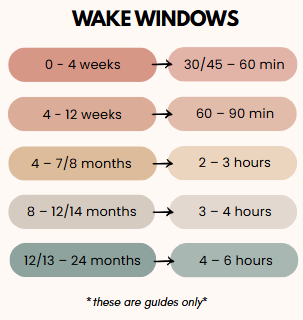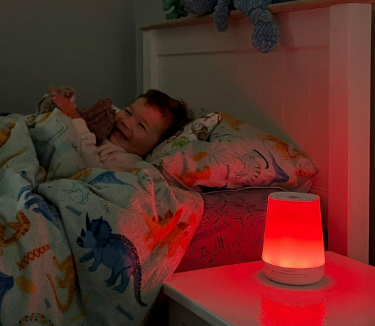Wake Windows
- Babee Dreams
- Jul 14, 2021
- 4 min read
Updated: Jun 29
A wake window is the duration of time that a baby can is awake between sleeps. These wake times are measured from the moment you take your baby out of the cot until they go back to sleep in the cot for their next sleep.
While it might seem intuitive to think that babies will sleep when they are tired, the reality is a bit more complex. Figuring out the right timing for your baby's sleep and ensuring they get enough sleep can be a challenge for many parents. It often requires understanding their individual sleep needs, observing their sleepy cues, and establishing a consistent sleep routine.
By being aware of your baby's wake windows and recognising their tired signs, you can help promote healthy sleep habits. It's important to note that the appropriate awake times can vary depending on your baby's age, and these are used as a guide only.
Here are sleep cues and age-appropriate wake windows you can follow:


Here's why wake windows are important
Babies who are awake too long may become overtired, and babies who are not awake long enough will be under-tired.
It’s a delicate balance between being awake long enough to sleep well, but not so long that we cause a meltdown. Go slowly — adding just a few minutes at a time
Finding the right balance between allowing your baby to be awake long enough to sleep well and avoiding overtiredness is indeed a delicate task. It's important to approach it gradually and make small adjustments to their awake times. Add 5-10 minutes at a time, and you can slowly extend their wake windows without overwhelming them. This allows your baby to adapt to longer periods of wakefulness at their own pace and helps minimise the risk of overtiredness and meltdowns.
Observing your baby's sleep cues is crucial in determining their tolerance for awake time. While general guidelines and wake windows can be helpful as a starting point, it's important to understand that every baby is unique and may have different needs when it comes to sleep.
Here are my top tips on how to achieve those full wake windows
Before you keep reading, remember what works for you and your baby is what matters most when it comes to wake windows. Trust your instincts, and if their routine suits you and your baby, there's no need to make adjustments.
Find their sweet spot
Use the guide above as a tool to try and find their wake window if you're not sure how long they should be awake. Sometimes it can be trial and error in the beginning, but the reason for finding their sweet spot is to avoid an undertired or overtired baby. Under-tiredness refers to a state where a baby or child is not sufficiently tired. Sometimes, their apparent "boredom" may mistakenly appear as tiredness. To address under-tiredness, it's important to ensure that their wake times include stimulating activities to help them expend energy and become adequately tired for sleep.
On the other hand, overtiredness occurs when a baby is excessively tired, and can do one of two things:
Fall asleep straight away due to exhaustion or
Take a while to fall asleep.
The reason they would take a while to fall asleep is that the stress hormone cortisol is released into the brain, making it difficult for them to settle down and fall asleep. It's important to note that overtiredness can also manifest as hyperactivity and may eventually result in a huge meltdown soon after.
Widen them slowly
Add 5-10 minutes per day to widen those wake windows. If you add too much at once, it is very likely that your baby will become super cranky and overtired.
Click for tips
If you find it difficult to expand your child's wake windows, taking them outside can be helpful. Sunlight exposure can provide a natural energy boost because sunlight suppresses melatonin production(the sleep hormone). Additionally, the outdoor environment can provide sensory stimulation with its vibrant colours and soothing sounds of nature, helping to keep your little one alert and engaged.
Times fluctuate
During the day, it is normal for wake windows to fluctuate. Typically, the wake window in the morning tends to be shorter, while the wake window before bedtime is often the longest. As the day progresses, their wake windows may naturally lengthen, allowing them to accumulate more tiredness before bedtime.
Do you need help?
Are you following wake windows and sleep cues, but you're still facing sleep struggles? I have the tools and resources to help you. For the first weeks, the 0 - 3 month sleep guide will help to establish a solid sleep foundation. For ages 4 - 24 months, I offer various options to support you, including optional plans that provide one-on-one assistance or the use of the downloadable sleep guide.

I'm the founder of Babee Dreams, a certified sleep consultant, and a mum of three. Everything I share is from evidence-based research, professional training through The Sleep Consulting Academy, real-life success stories from families I've worked with, and the instincts that come from being a mum.
Disclaimer: This blog is for informational purposes only and is not a substitute for professional medical advice. Always consult your healthcare provider for personalised guidance regarding your baby's health and well-being, Babee Dreams does not give medical advice.



